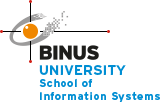Agile Audit

Agile Auditing: Keeping Up with the Pace of Change
Traditional auditing methods, often rigid and time-consuming, struggle to adapt to today’s dynamic business environment. This can lead to delayed insights and an inability to address emerging risks effectively. To overcome these limitations, many organizations are adopting Agile auditing methodologies.
What is Agile Auditing?
Agile auditing is a flexible, collaborative approach that borrows principles from Agile software development. An Agile Audit is an adaptive, iterative process designed to evaluate the effectiveness and compliance of Agile frameworks within an organization. Unlike traditional audits, which are linear and retrospective, Agile Audits align with Agile principles by being incremental, continuous, and collaborative
It emphasizes:
- Close collaboration between auditors and the individuals being audited.
- Breaking down audits into smaller, manageable stages.
- Continuous feedback throughout the process.
- Prioritizing the audit based on the most critical risks.
- Utilizing technology to automate tasks and improve efficiency.
several critical purposes:
- Ensure Compliance: Agile organizations must still meet regulatory, contractual, and internal compliance requirements.
- Improve Processes: Regular assessments help identify inefficiencies or misalignments in Agile practices.
- Foster Continuous Improvement: By providing timely feedback, Agile Audits enable teams to make incremental improvements.
- Build Stakeholder Confidence: Demonstrating governance and accountability assures stakeholders of the organization’s commitment to quality and compliance.
The Advantages of Agile Auditing:
- Faster audit cycles and quicker delivery of results.
- Early detection of emerging risks through continuous monitoring.
- Improved communication and trust between auditors and those being audited.
- Greater adaptability to changing business needs.
- More timely and relevant insights for management.
Implementing Agile Auditing:
- Clearly define the audit’s purpose and scope.
- Create an iterative audit plan with well-defined stages and deliverables.
- Leverage technology such as data analytics tools and project management software.
- Build a diverse and skilled audit team.
- Foster a culture of open communication and feedback.
- Continuously review and improve the Agile auditing process.
Key Principles of an Agile Audit
- Collaboration Over Command: Traditional audits can feel adversarial. Agile Audits emphasize collaboration between auditors, teams, and stakeholders.
- Continuous Feedback: Agile Audits favor ongoing assessments rather than one-off reviews, integrating feedback into the workflow.
- Value-Driven Approach: Auditors focus on evaluating what adds value to the organization, ensuring that processes align with business goals.
- Adaptability: Just as Agile teams pivot based on feedback, Agile Audits evolve as organizational needs and environments change.
Challenges and Considerations:
- Overcoming resistance to change from both auditors and those being audited.
- Ensuring auditors have the necessary skills and training for Agile auditing.
- Maintaining the quality and rigor of the audit process.
In summary, Agile auditing offers a more efficient and effective approach to auditing in today’s fast-paced business world. By embracing collaboration, flexibility, and continuous improvement, organizations can gain valuable insights and better manage their risks.

